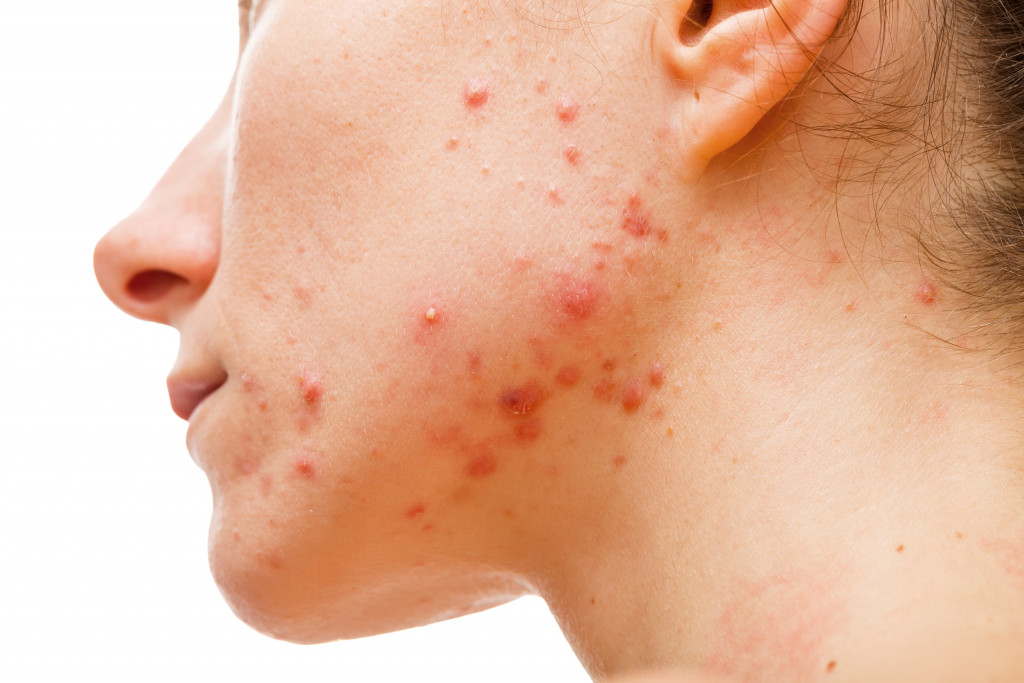Countless inconveniences can come with traveling, but perhaps one of the worst ones is experiencing acne breakouts. The last thing you want is to have pimples ruining every vacation picture, and yet, breakouts can still happen—and they are, in fact, very common among travelers.
Breakouts are almost impossible to avoid, especially when you’re on the go, but there are a lot of ways you can minimize them. If you want to prevent your face from breaking out every time you travel, then you need to know what’s causing it in the first place, which may be one or more of the following reasons:
-
You’re not moisturizing before your flight
Anyone who has gone on a flight will know just how dry the cabin can get, which is not good news for your skin. The dry air in the cabin can suck up the moisture from your face, and in response, your skin produces oil to rehydrate itself. Unfortunately, this often causes an exacerbation of acne and other skin problems. Not to mention the fact that germs from other passengers circulate in the recycled air.
Moisturizing is a great way to prevent flight acne and other skin problems caused by dehydration. Apply a generous layer of moisturizer on your face and other exposed parts of your skin before, during, and after the flight. Aside from keeping your skin hydrated, moisturizer also provides an extra layer of protection against germs in the air.
-
You’re not using acne-safe makeup
Whether you’re traveling or not, you should use the best makeup for acne if you want to reduce the risk of breakouts. Unfortunately, not all makeup products are designed for sensitive and acne-prone skin. That means that if you use makeup that contains harsh ingredients, you may be inadvertently causing your own skin problems.
-
You keep touching your face
When you’re traveling—or generally go outside—you touch a lot of things that hundreds of people have touched before you. Light switches, door handles, stair railing—you probably touch all of these things and don’t think much of it. But imagine how many germs there are on these surfaces, and if you touch your face, you’re practically transferring all those germs on your skin.
This is a common reason why a lot of travelers tend to experience breakouts while traveling. Touching your face is often an unconscious act, whether you’re scratching an itch or removing a piece of dirt. That said, it’s time to be more mindful of where you’re touching if you want to minimize the risk of breakouts while you’re out and about. More importantly, make it a habit to wash and sanitize your hands frequently to avoid transferring germs from your hands to other parts of your body.

-
You press your face on public seats
If you must go to sleep while riding a plane or a train, always make sure that your face is not touching the back of the seat—or any other surface that’s not clean. Use a neck pillow to keep your head upright. And if you’re laying your head down on a surface, use your arms as a makeshift pillow and sanitize the surface beforehand with a wipe.
-
You’re not taking anti-mask-ne measures
Mask-ne is an acne breakout caused by wearing a mask, which we’re all too familiar with nowadays due to COVID-19. Luckily, there are several effective ways to prevent mask-ne, such as:
- Not wearing makeup under the mask
- Removing your mask every four hours
- Washing fabric masks after every use
- Applying moisturizer before wearing the mask
- Using a topical antibiotic cream
- Washing your face after taking off the mask
After the pandemic is over, it is still a good idea to wear masks while traveling, especially in crowded places like airports and tourist spots. Hence, keep these tips in mind whenever you’re wearing a mask to prevent the dreaded mask-ne breakout.
-
Your skin is sensitive to the hotel sheets
The laundry products that hotels use to wash linens may contain ingredients that your skin is sensitive to. For this reason, it’s highly advisable that you bring a silk pillowcase whenever you’re traveling so that you can keep your skin safe from irritants in the hotel sheets.
Acne can be difficult to deal with on regular days, but it’s even harder when you’re traveling. By avoiding these common causes, however, you can reduce the risk of experiencing breakouts while on a trip—as well as keep your skin as healthy as it can be despite being in a different environment.

